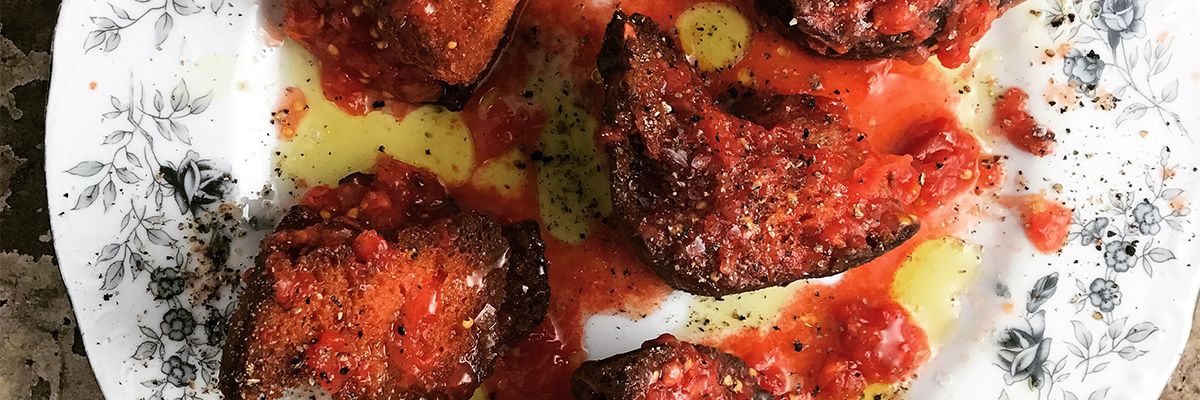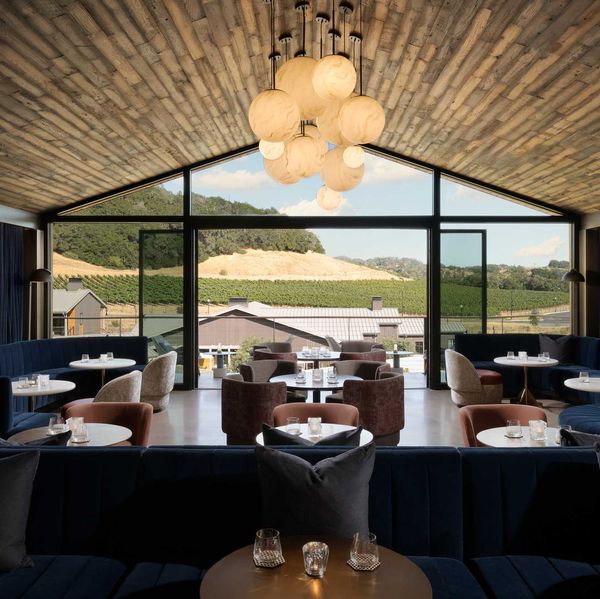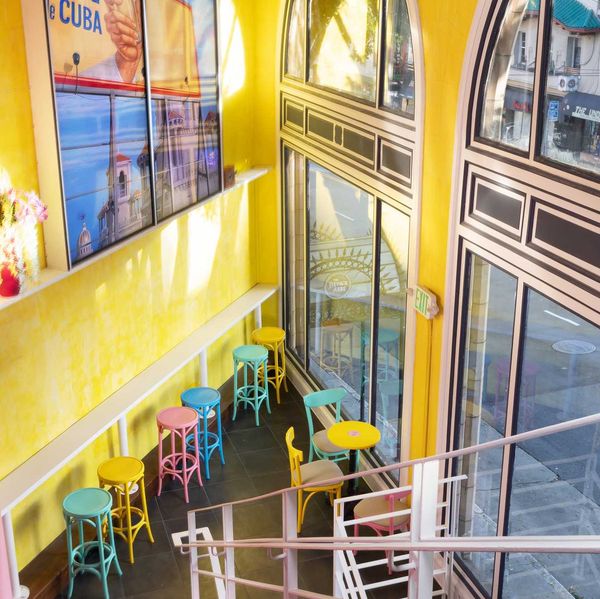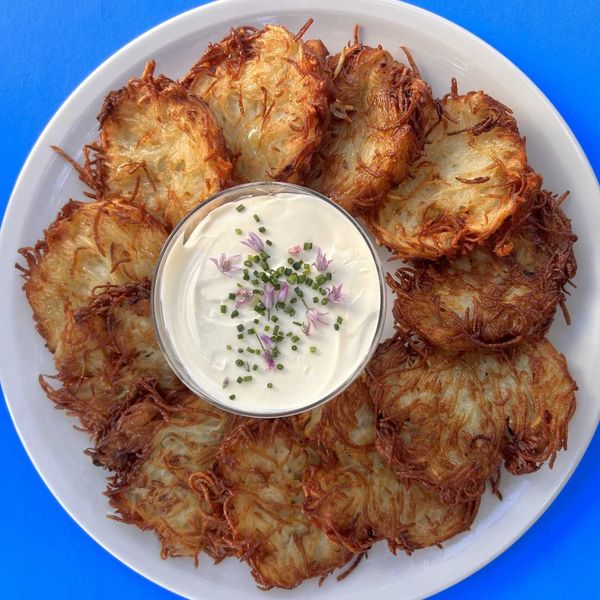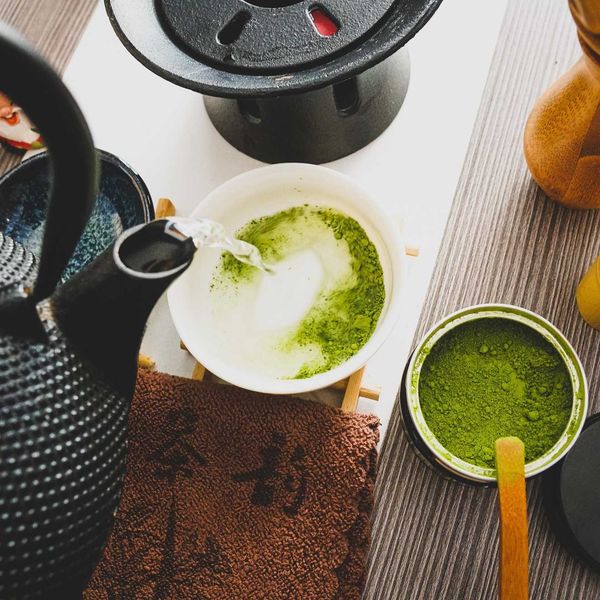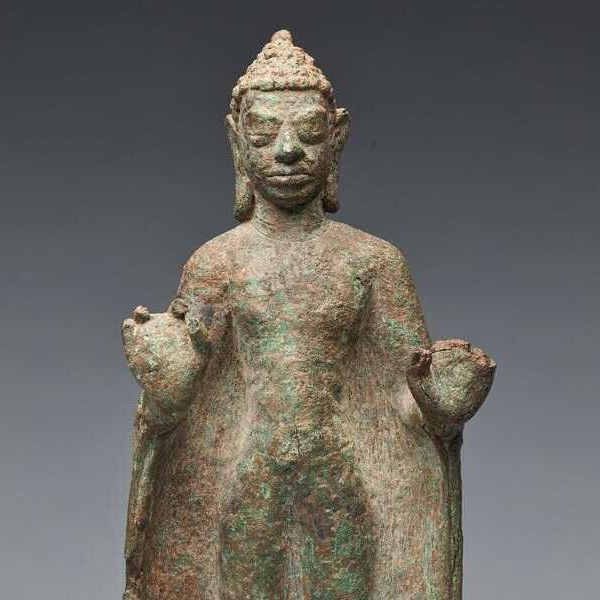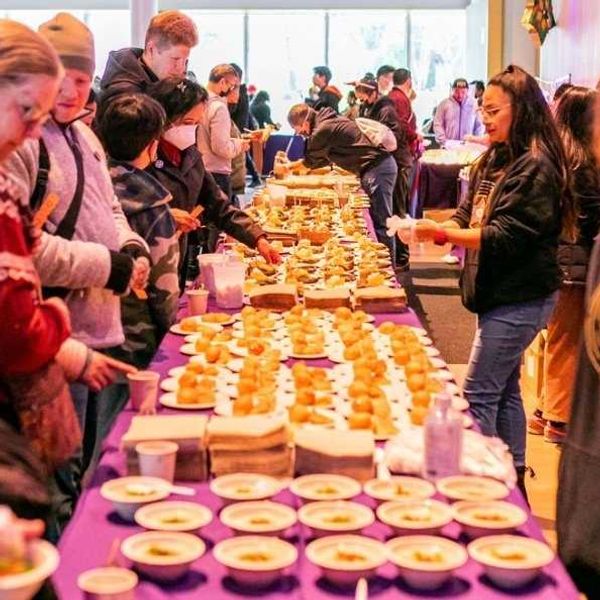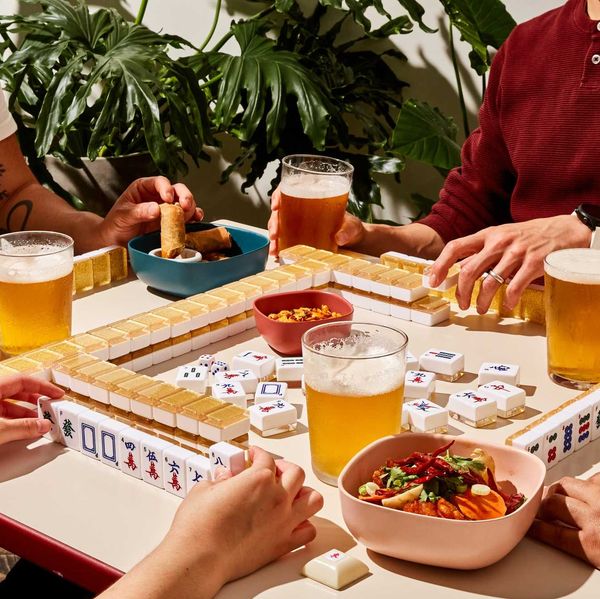Considering how long and eagerly I'd been anticipating the debut of Anthony Strong's new restaurant, Prairie, I had surprisingly little in the way of preconceptions about the food. It would have something to do with Italy, I surmised, but beyond that I couldn't quite imagine what the dishes would look like, or the ingredients and flavors with which they might be laced.
About the only thing of which I was certain was that my expectations were high. Strong, after all, is a highly capable chef, a man who does his due diligence, and someone, as I would learn, who can turn something as unprepossessing as a hunk of stale bread into a thing of beauty.

Chef Anthony Strong. (Photo: Aubrie Pick)
I first met Strong in 2011 when preparing to review Locanda—Craig and Annie Stoll's newly opened Roman-inspired restaurant—where he had just begun his tenure as executive chef. Recently returned from a period of intensive work and study in Lazio, Strong came across as something of an autodidact in a conversation that turned from the first-century epicure Apicius, to the geographical nexus of garum production, to the challenges of reverse-engineering the recipe for carciofo alla giudia, a fried artichoke dish peculiar to the Roman Ghetto.
Struck by Strong's enthusiasm and depth of knowledge, I was equally taken by the food at Locanda, where, in the years that followed, I found myself going with compulsive regularity to lose myself in the flavors of the above-mentioned artichokes, whorls of tonnarelli cacio e pepe, and other delicacies. Meanwhile, as Strong continued to explore Italy's food traditions on his annual tours of duty in that country, he was gradually picking up on a curious trend.
"I've gone to Italy a dozen times," said Strong, "from a week to a couple of months, to dig in and cook and work. And I kept noticing there were Japanese stages in the kitchen." While working at an osteria in a town on the outskirts of Rome, he struck up a friendship with a fellow stage from Sapporo with whom he found himself swapping stories about Italian restaurants in the States and in Japan. "After work there was nothing to do," said Strong, "so we'd have a Peroni and talk about Italian food—his version, our version. I'm interested in how a cuisine translates to another region or culture, and it planted the seed for wanting to see Italian food outside of Italy and the U.S."
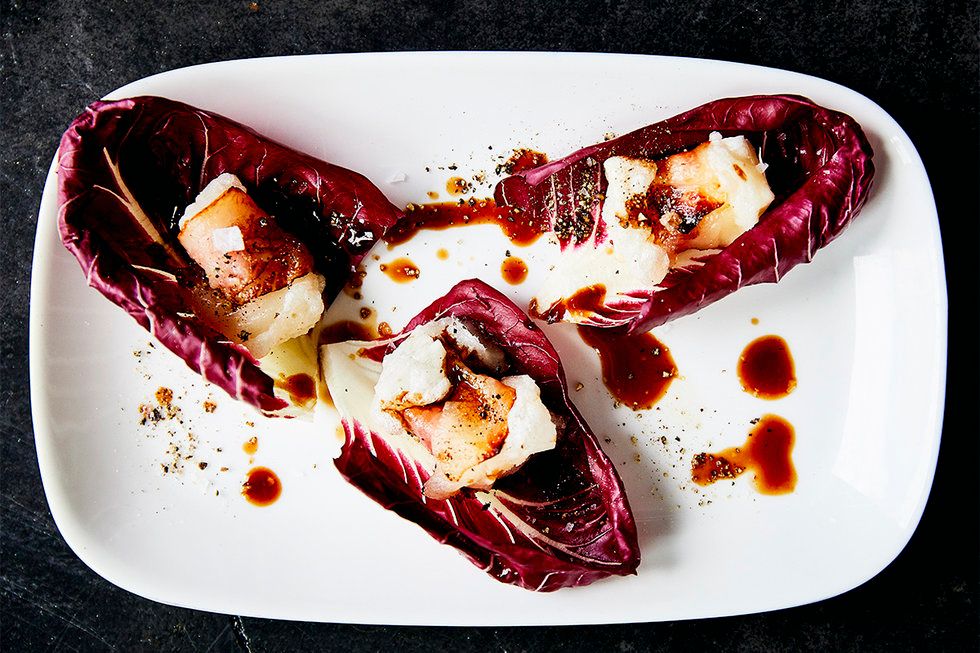
Strong's guanciale-wrapped mochi was inspired by a classic izakaya dish. (Photo: Aubrie Pick)
Toward the end of his term at Locanda and the Delfina group, Strong took a six-week sabbatical to see and taste for himself how chefs in Japan approached Italian cooking. Stylistically, he said, "the execution tends to be very meticulous, very disciplined. If there's one thing I noticed in Japan, it's that some of the Italian food is so perfectly made, it's kind of lacking that soul." At the same time, he was intrigued by dishes seasoned with traditional Japanese ingredients like kombu and various kinds of dried fish, whose rich, umami flavors are not unlike that of bottarga—the dried, salted roe typically of mullet or tuna—which is used as a condiment on pastas and in other dishes in Sardinia, Sicily, and elsewhere in Italy.
Intrigued by what he saw in Japan, and on subsequent travels in Europe, South America and Mexico, Strong began to envision a different approach to Italian cuisine—one that incorporated ingredients from other culinary traditions, while staying true to Italy's traditional flavors and sensibilities. Recalling his thought process at the time, Strong made an algebraic analogy. "X is sort of like Y," he said. "What if we tweak it a little bit, using tea leaves, or mochi wrapped in guanciale, an Italian take on a classic izakaya dish? I started to see that it was possible to make something that registered as very Italian, and at the same time open up the pantry a bit."
At the end of 2016, Strong left the Delfina group. After a dalliance with an experimental delivery-only restaurant called Young Fava—which, while successful, left him missing human contact—he organized a series of pop-up events at Local Mission Market, where he began testing recipes and a menu whose larger-format entrées lent themselves to sharing. By the time I went to one of his pop-ups—which I remember for an especially yummy squid ink spaghettini with uni—Strong already had his eye on a permanent space in the Mission, the soon-to-be-former home of Hog and Rocks, at the corner of 19th Street and San Carlos.
When I arrived at the appointed time on a mid-October evening, Prairie was packed to the gills. The restaurant—its name an homage to the landscape of Iowa, where Strong spent much of his childhood—had been open precisely six days. Word had gotten out, apparently. My always reliable friend, who had done such justice to the tasting menu at Eight Tables, joined me at a two-top so cozy with its neighbors it gave the proceedings a convivial, communal feel.
The cocktail list was refreshingly short and to the point. I ordered the Sparkling Negroni, bracingly strong due to the standard mix of gin, red vermouth and Campari, yet with a pleasingly round, fruity dimension thanks to an injection of house-carbonated Salice Salentino, a wine from an appellation near Lecce, in Puglia. The wine list, which Strong curates, is similarly compact, just 21 bottles, mostly Italian but with a handful from France. I began my explorations there with a Nebbiolo rosato—lightly floral on the nose with a lovely rose hip tang and an ever-so-slight effervescence—from the Piedmontese winery Ioppa.

The Prairie Sour. (Photo: Aubrie Pick)
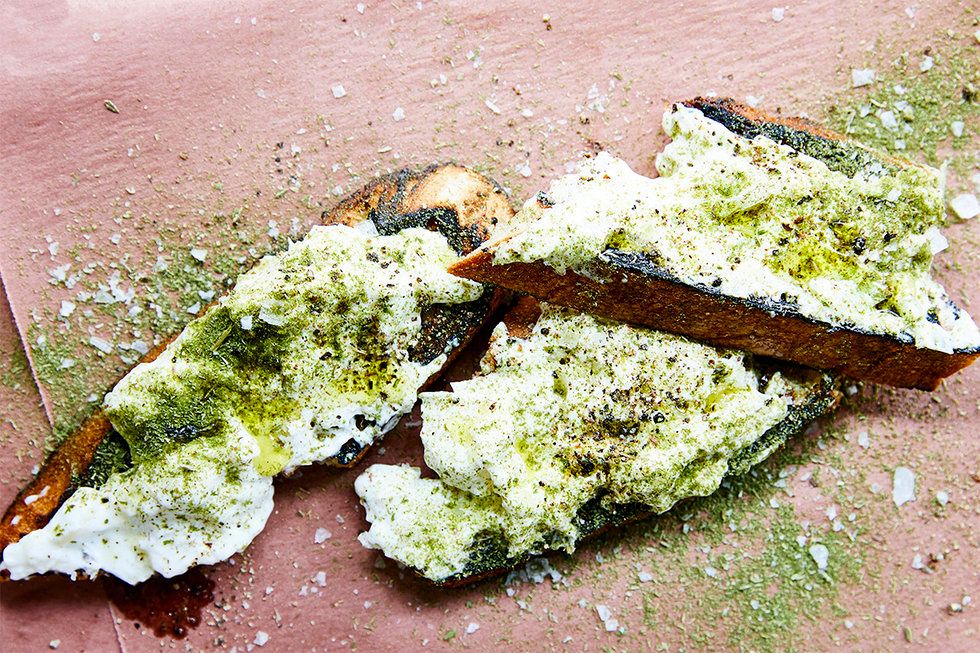
Burrata with spring onion, a playful take on the flavors of sour cream and onion dip. (Photo: Aubrie Pick)
We proceeded to dig into a raft of appetizers, beginning with pane distrutto (literally, destroyed bread): giant croutons torn from a day-old levain batard, which, though drenched in olive oil and dunked in tomato pulp intensely seasoned with garlic and chiles, stayed improbably crispy from the first eye-opening bite to the last.
Shiro (white miso) might come as a surprise on an Italian menu, but Strong made it work, at least on the level of taste, by pureeing it with pine nuts and chickpeas into a creamy fluff garnished with a drizzle of urfa biber (a sweet-smoky Turkish pepper), bloomed in water and vinegar. While I found myself struggling somewhat to square miso with the notion of traditional Italian food ways— due to a certain psychological rigidity stemming from the still-fresh trauma of being reprimanded by an eight-year-old Sicilian boy for the transgression of embellishing a Caprese salad with figs—my taste buds had less difficulty homing in on the faint but persistent flavor of pinoli pervading the concoction, which we scooped up and devoured with tiny, halved cucumbers.
One should never say no to burrata, nor did we. Strong gets his from Belfiore in Berkeley, crushes it up with spring onions cooked in olive oil with lemon peel, adds a bit of crème fraîche, and garnishes it with olive oil and dried, powdered spring onion—the flavors of the crème fraîche and the allium a playfully subtle allusion to sour cream and onion dip. The dipping utensils in this case were wafer-thin crostini, toasted to a fare-thee-well on a mesquite-fired grill.
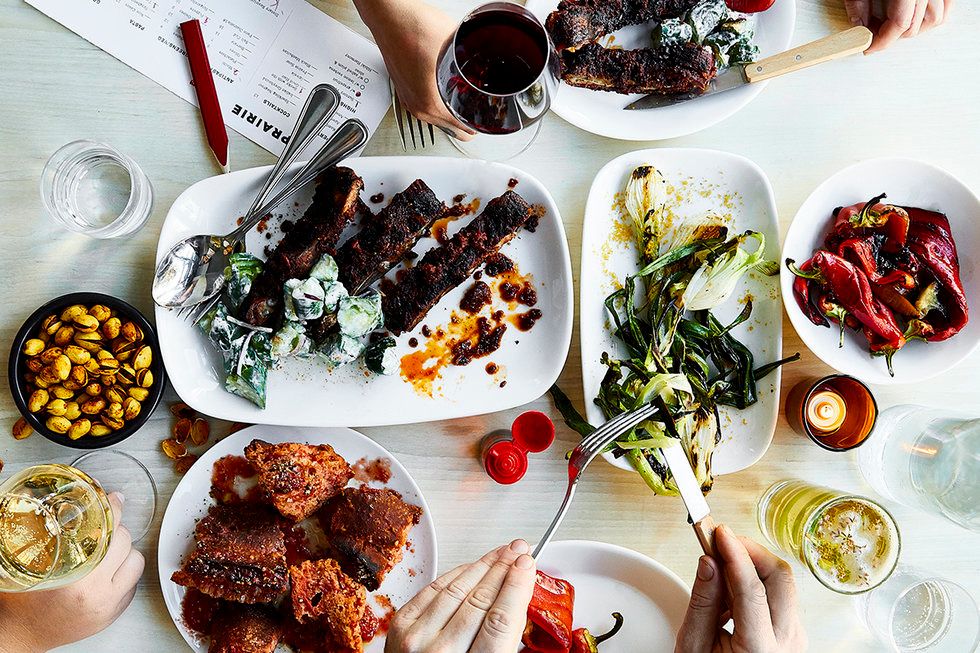
The menu is designed for sharing. (Photo: Aubrie Pick)
Aside from a sleek induction range, Prairie's kitchen is a wood-fired operation, the grill complemented by a futuristic-looking charcoal-burning oven made by the Barcelona-based company Josper. As a result, virtually every dish is infused with a smoky, barbecued deliciousness.
Case in point, a Piedmontese-esque dish of cauliflower, in which a whole head of the stuff is cooked in the Josper until charred on the outside, soft on the inside, then seasoned bagna cauda-style with an emulsion of cream, olive oil, garlic and anchovy, as well as shavings of cured bonito, a core ingredient in dashi, the soup stock that is one of the prime constituents of Japanese cooking. Never in my life had I encountered a cruciferous vegetable that read so much like a charbroiled steak, or that made me want to run out and drop fifteen grand on a Catalan kitchen appliance.
The restaurant's own house-cured guanciale, meanwhile, wrapped around fat little fingers of hot mochi, transported me right back to Emilia-Romagna, where, on a recent trip, every meal had begun with plates of the traditional fried bread, gnocco fritto, served piping hot and topped with mounds of Prosciutto di Parma.
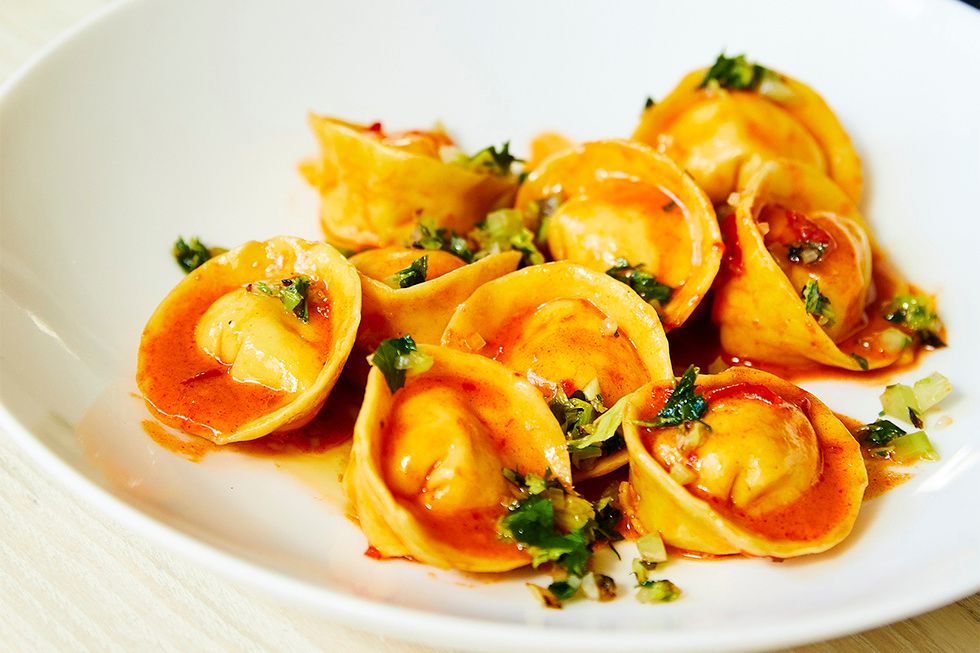
Gulf shrimp and burrata tortelli, at Prairie. (Photo: Aubrie Pick)
From the menu's concise yet eclectic pasta section, we went with the Gulf shrimp and burrata tortelli, a variation on a dish I'd had several times at Locanda and was curious to experience in a new iteration. The tortelli were big and bold, real mouthfuls, stuffed with a mix of burrata, mozzarella, and delectably meaty shrimp, and dressed in a creamy-tangy-spicy sauce made of shrimp stock, fermented chiles, a little milk, and a splash of white wine.
Moving on to the mains, we continued in a maritime theme with a creation akin to moules marinières. The mussels—impeccably fresh and sweet little numbers from Saltspring Island in British Columbia—were steamed with prosecco rather than Breton cider, and mounted with butter seasoned with the beguiling spiciness of nasturtiums, the remnants of which we mopped up with more of those deliciously smoky crostini.
For the last savory dish, it was back to the land, or rather land with a hint of the sea. Among other things, Strong loves dim sum and all the seasonings that go along with it, including XO sauce. Invented in Hong Kong in the 1980s, and used in many different types of Chinese cooking, XO sauce is traditionally made from Jinhua ham, dried scallops, dried shrimp, chiles, garlic, ginger, soy sauce and oil. Strong imagined an Italian version in which he uses 'nduja, an ultra-soft and fatty Calabrian salami, in place of Jinhua ham; Calabrian chiles rather than standard-issue chile flakes; and a bit of anchovy in addition to the dried scallops and dried shrimp.
Given the way he rhapsodizes about this intensely savory-umami-spicy substance, I imagine you'll see it in all sorts of different dishes to come, but on this particular night it was slathered on some wonderfully flavorsome Berkshire spare ribs grilled to maximum juiciness, with an equally luscious side of grilled fennel and garnished, Roman-style, with a scattering of fresh mint.
With the possible exception of a single appetizer, the miso, which didn't quite fit in with my notions of what Italian food is or can be—perhaps a version of tortellini in brodo, made with a miso broth or dashi, would have been easier to wrap my head around—Strong's dishes were not only consistently, excitingly delicious, but possessed of a certain soundness as well.
Considering this, I recalled a conversation with Strong, in which we discussed the question of why, unlike their Italian counterparts who are for the most part tradition-bound and leery of novelty, so many American chefs seem driven to innovate.
"It's an interesting thing," said Strong. "We're the melting pot, right? It's the Wild West and anything goes. There aren't centuries of tradition that we feel beholden to, which is for better or for worse. I think that cooking in America can be such a free-for-all that it can be disjointed at times. It's important to me to go to the source and dig into things as much as possible. That's why I spent so much time in Italy, and that's why I'm not going to start throwing around ingredients from all different cultures without knowing why. The creative aspect is so important, but it also comes with a responsibility to not lose sight of all the traditional things that are beautiful in their own right."
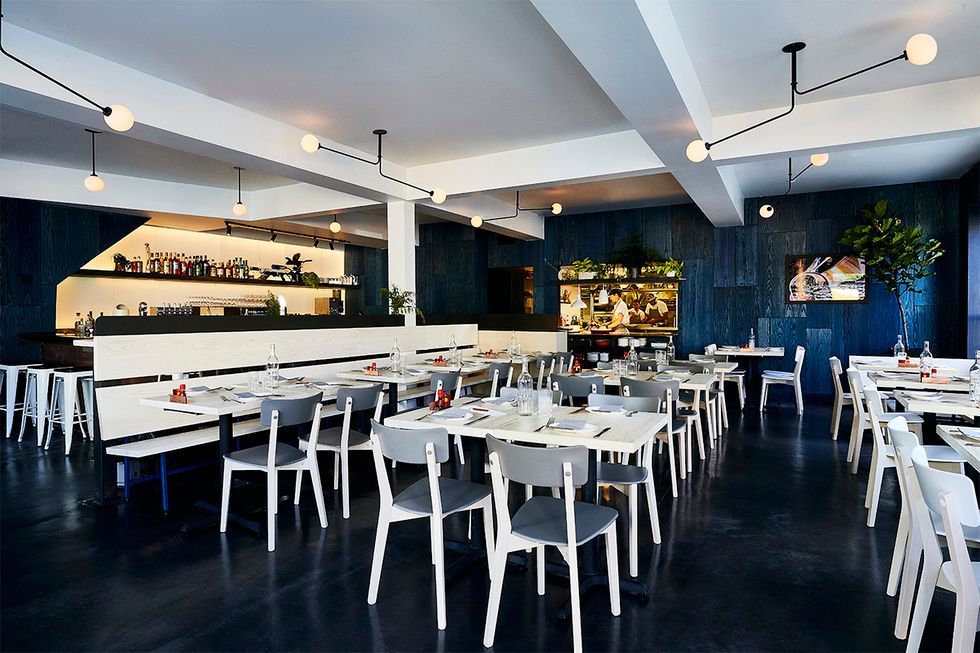
Strong designed Prairie's dining room, whose walls are finished with an indigo dye known in Japan as aizome. (Photo: Aubrie Pick)
// Prairie, 3431 19th St. (Mission), prairiesf.com



